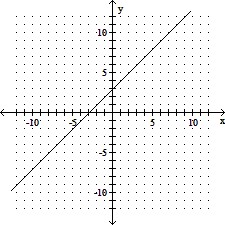Start with the given graph of y. a) Describe a sequence of transformations that results in the graph of g(x); b) Find the range of g(x); c) Find the horizontal asymptote of the graph of g(x).y = 3x; g(x) = 5(32x - 1) + 5
A. a) The graph of y = 3x is compressed horizontally by a factor of  , shifted
, shifted  unit to the right, stretched vertically by a factor of 5, and shifted five units up.
unit to the right, stretched vertically by a factor of 5, and shifted five units up.
b) (5, ?)
c) y = 5
B. a) The graph of y = 3x is compressed horizontally by a factor of 2, shifted  unit to the right, stretched vertically by a factor of 5, and shifted five units down.
unit to the right, stretched vertically by a factor of 5, and shifted five units down.
b) (-5, ?)
c) y = -5
C. a) The graph of y = 3x is compressed horizontally by a factor of  , shifted
, shifted  unit to the left, stretched vertically by a factor of 5, and shifted five units up.
unit to the left, stretched vertically by a factor of 5, and shifted five units up.
b) (5, ?)
c) y = 5
D. a) The graph of y = 3x is compressed horizontally by a factor of  , shifted
, shifted  unit to the right, stretched vertically by a factor of 5, and shifted five units down.
unit to the right, stretched vertically by a factor of 5, and shifted five units down.
b) (-5, ?)
c) y = -5
Answer: A
You might also like to view...
Find the reference angle for ?. ? = 215°
A. -35° B. 125° C. 35° D. -55°
Tell if the square root is rational, irrational, or not a real number. If the square root is rational, find the exact value; if the square root is irrational, write the approximative value rounded to 2 decimal places.
A. rational, 10 B. not a real number C. rational, -10 and 10 D. irrational, 10.05
Solve the problem.Suppose the demand function of a certain item is given by  and the supply function is
and the supply function is  Find the producer's surplus. Round to three decimal places.
Find the producer's surplus. Round to three decimal places.
A. 0.773 B. 1.337 C. 0.228 D. 0.664
Graph the equation using the slope and y-intercept.-2.4x + 1.7y = 7
A. 
B. 
C. 
D. 